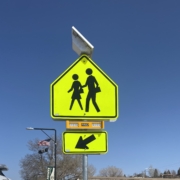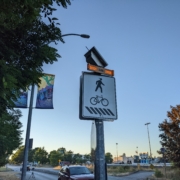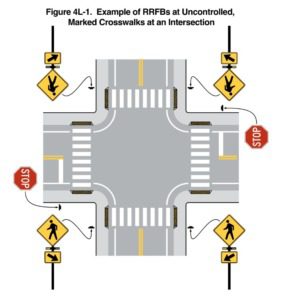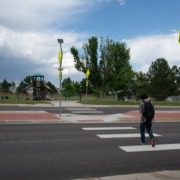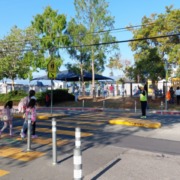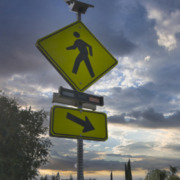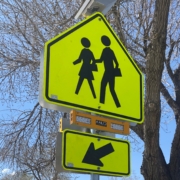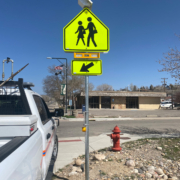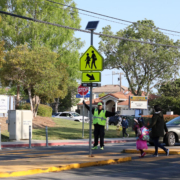CDOT Approves Availed Technologies’ AV-400 RRFB for Safer Colorado Crosswalks
Availed Technologies is proud to announce that our AV-400 Rectangular Rapid Flashing Beacon (RRFB) is now approved by the Colorado Department of Transportation (CDOT). Represented by Altitude Signal, this approval follows a comprehensive two-year field test.
Overview of the AV-400 RRFB
The AV-400 RRFB is an effective device for improving crosswalk safety and accessibility. The design of every component, from the controller to the mounting brackets, is optimized to ensure quick and cost-effective installation. Utilizing high efficiency LED modules, the product ensures vehicles are alerted to pedestrians at crosswalks, significantly reducing accidents.
CDOT Approval Process
CDOT’s rigorous two-year evaluation involved a field test installation, proving the capability for reliable year-round operation throughout all environmental extremes. The system demonstrated compliance with MUTCD standards and operated flawlessly throughout the field test period. The AV-400 met all the evaluation criteria and has been included on the CDOT Approved Product List under CDOT Form 595, APL Reference Number 5286-24.
Other Availed products on the Colorado Approved Product List include the AV-200 LED Enhanced Sign and AV-240 24 Hour Solar Flashing Beacon.
Importance of The CDOT Approved Product List
Approval by CDOT validates the AV-400’s quality and reliability, enabling and providing further support for its deployment in Colorado traffic safety projects. This listing assures municipalities and contractors of the product’s compliance and effectiveness.
The CDOT Approved Product List is crucial for ensuring that only high-quality products that meet performance and safety standards are used in transportation projects.
In the context of traffic safety and transportation projects, the CDOT Approved Product List is particularly important for electronic traffic signal and Intelligent Transportation System (ITS)
equipment projects, where safety and reliability are critical. By being listed on the CDOT APL, the AV-400 RRFB is recognized as meeting these high standards, which assures stakeholders of its reliability and effectiveness.
The inclusion of the AV-400 RRFB on CDOT’s Approved Product List signifies its compliance with rigorous testing and evaluation processes, making it a trusted solution for enhancing pedestrian safety across Colorado. Municipalities and contractors can confidently use the AV-400 in various traffic safety projects, knowing it meets the requirements set by CDOT.
Benefits and Technical Specifications
The AV-400 RRFB offers:
- High-Intensity LED Lightbars: Superior visibility to alert motorists.
- Easy Installation: Designed for a quick and intuitive set-up.
- Cost-effectiveness: The AV-400 is a low-cost leader among RRFBs.
- Energy Efficiency: Optimal for low solar insolation areas.
- Durability: Built to withstand harsh conditions.
- Compliance: Meets MUTCD standards.
Applications
The AV-400 is ideal for improving pedestrian safety at:
- Uncontrolled Marked Crosswalks at Intersections: where major legs are uncontrolled through legs and minor legs are stop sign controlled
- Mid-Block Crosswalks: Multi-modal trails, greenways, and cycle routes that cross roadways
Purchasing Information
For purchasing details, contact Altitude Signal, our local distributor. As a trusted representative in the field, they provide comprehensive support for pricing, availability, and installation.
The CDOT approval of the AV-400 RRFB highlights Availed Technologies’ commitment to pedestrian safety and product excellence. This milestone paves the way for broader implementation across Colorado, offering an affordable opportunity for enhancing crosswalk safety statewide.

